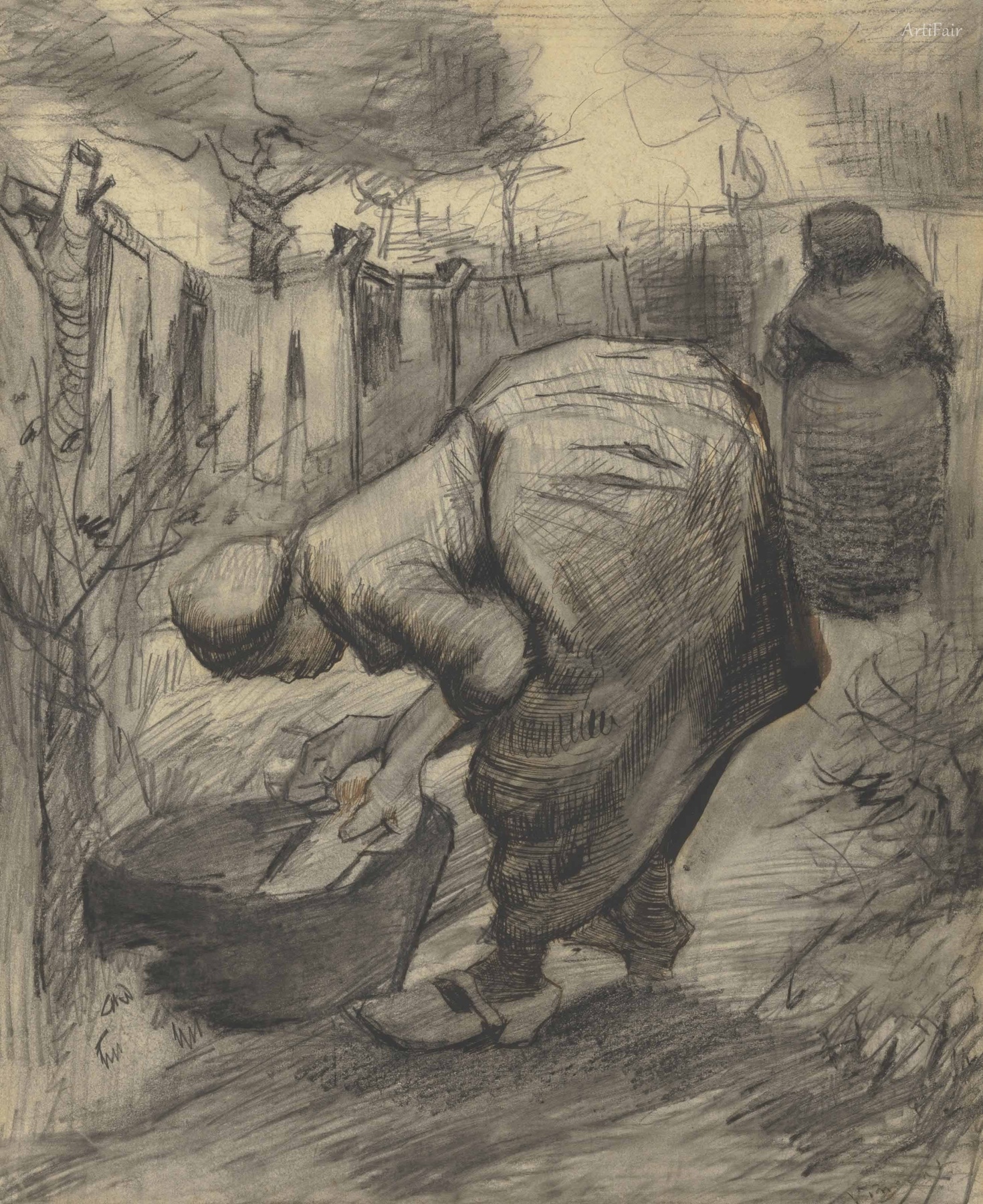
Art Appreciation
In this profound work, the artist captures the essence of a peasant woman's toil as she leans over a simple washtub, her back slightly hunched under the weight of both her physical labor and the burdens of life. The charcoal and ink style creates a striking contrast between dark and light, emphasizing the textures of her clothing and the surrounding environment. Van Gogh's expressiveness can be felt in the dynamic lines—a reflection of the woman's strenuous work and her determination amidst a backdrop of laundry hanging on a line, which adds a contrasting element of domesticity to the otherwise laborious scene. The second figure in the shadows, perhaps another worker, suggests a sense of community among the women, yet their faces are obscured, leaving the viewer to contemplate the shared solitude in hard work.
The color palette remains monochromatic, evoking a sense of somberness befitting the hard lives of rural peasants in the late 19th century. The broader strokes frame the peasant woman, almost isolating her in her labor, while the faint outlines of trees and fences serve to navigate the viewer’s eye through the composition. It feels like a window into the arduous yet honest life of the working class, giving us a glimpse of their struggles and fortitude. The emotional impact resonates with a sense of empathy, echoing back to Van Gogh's own deep understanding of and compassion for those living at the margins of society. Painted in a time of transition in Europe, this artwork captures not only the intimate details of one woman's day but also embodies the broader human experience of labor and persistence during a burgeoning industrial landscape.